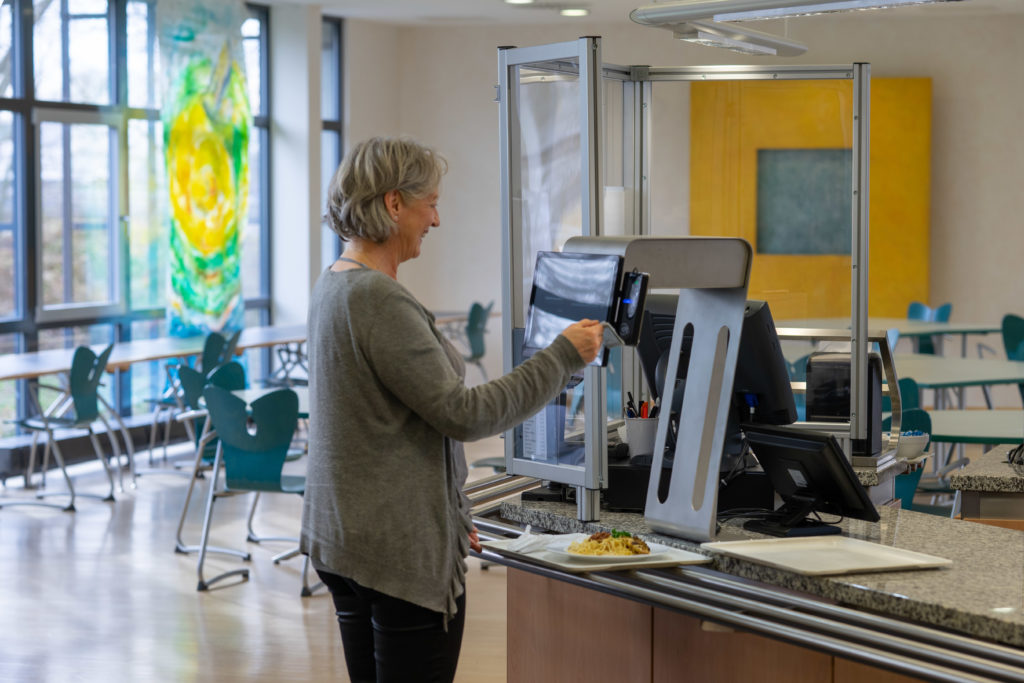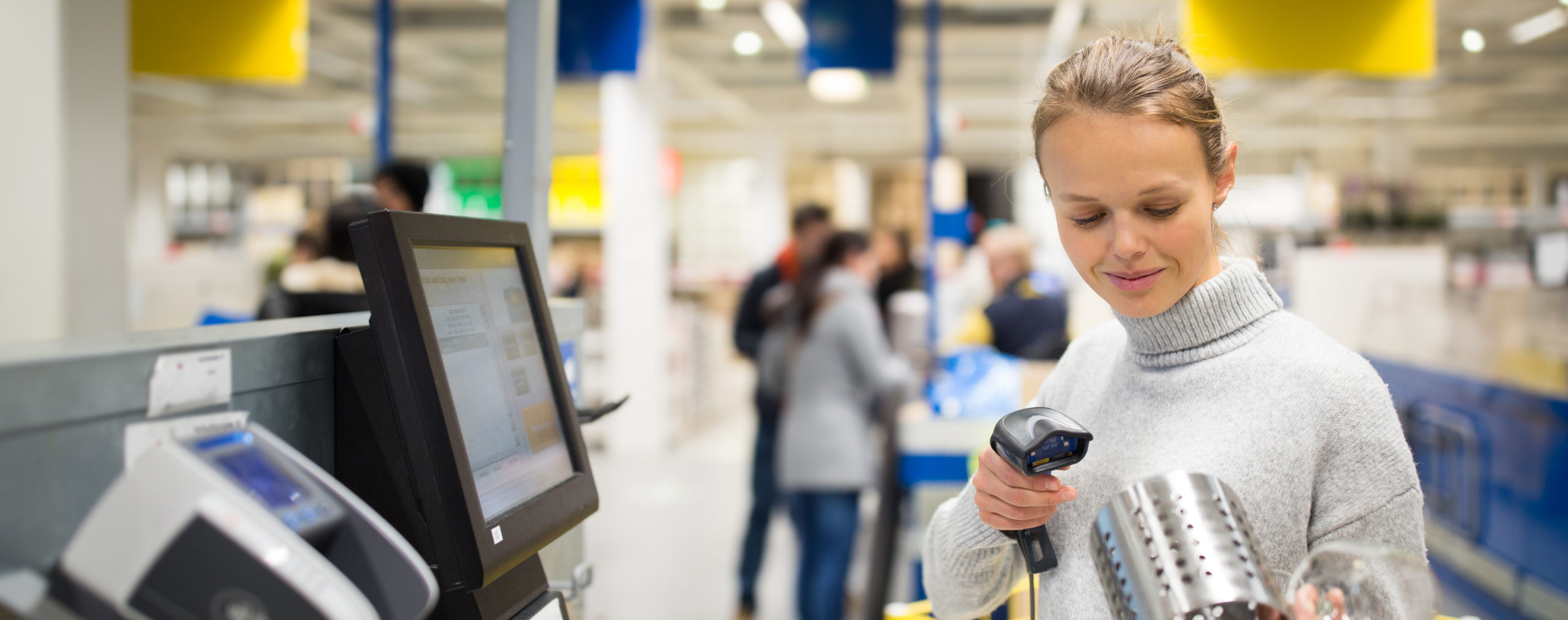Mobile self-checkouts
With mobile self-checkout systems, the point of sale is either completely or only partially replaced. How advanced the technology must be for this depends on the type of self-checkout system. There are two types of mobile self-checkouts: Fully autonomous stores and mobile self-scanning.
Autonomous shops
The self-checkout strategy that attracts the most media attention is supermarkets that manage completely without staff. The advantages of this concept are obvious: opening hours around the clock, and without increasing personnel costs or regulatory requirements. Theft prevention works with the help of surveillance cameras and smart shelves.
These shelves report their fill level automatically so that supplies can be replenished in time. In some of these supermarkets, such as the Amazon Go stores operated by Amazon, there is no point of sale at all. Customers are tracked in the supermarket. Thanks to the networking with the shelves, an algorithm calculates which items are in the customer’s shopping basket. The payment process is completed via the customer’s Amazon account. In this way, queues are completely avoided with the help of artificial intelligence.
On the other hand, the close monitoring of customers also raises questions about data protection. Customers are registered with facial recognition and their purchases are linked to their accounts. This makes it possible to draw very precise conclusions about the customers’ everyday life and consumption behavior.
Mobile Self-Scanning
Another variant of self-checkouts without a fixed point of sale is mobile self-scanning. Here, in contrast to fully autonomous shops, data protection is no different than in conventional supermarkets. Customers enter the individual items as usual using barcodes and therefore do not have to identify themselves or link their purchase to accounts. The only big difference to conventional shops is that the items are already scanned in the shop. That happens as soon as they are placed in the shopping basket. At the checkout, all that is left to do is to pay. This speeds up the checkout significantly.
These advantages are reflected in the success of this system: from 2019 to 2021, the share of mobile self-scanning in supermarkets and other retail storeshas increased almost tenfold! The technology has arrived in the midst of society.
Stationary Checkouts
Stationary self-checkouts
The most popular type of self-checkout is now stationary self-scanning. Whether from the hardware store, the blue-and-yellow furniture store, or the supermarket checkout: scanning and paying for one’s items independently is now part of everyday life for most consumers. The great advantage of these systems is that a classic point-of-sale offers enough square meters for up to four self-checkout stations. This shortens waiting times and can increase turnover.
In addition, several stations can be supervised by one person. As an operator, you don’t have to rely on smart shelves. At the same time, you don’t need to monitor your customers at every turn, as is the case in autonomous supermarkets. This makes the system easy to retrofit and inexpensive to implement. Furthermore, a supervising person can quickly be on hand should minor problems arise.
Autonomous recognition
Another form of self-checkout that customers find very convenient are stationary checkouts that take over the scanning of items autonomously.
RFID-technology
Decathlon, the French retailer for sportswear and equipment, has been using RFID technology at its checkouts since 2009. As a customer, you place the desired items in a shopping basket at the checkout, and all the items appear in the POS system and can be checked out directly without having to be registered individually. The price tags are equipped with RFID chips that are recognized directly.
“RFID” stands for Radio Frequency Identification. The information is transmitted by wireless technology, similar to contactless debit or credit cards. An RFID system includes the RFID tags that contain the information and an RFID reader that can extract that information.

No queues thanks to AI-based self-checkout
Self-service bakeries such as BackWerk or company restaurants and canteens, where self-checkouts are becoming more and more common, also have this problem of missing RFID tags. This is where a different technology comes into play. Using AI-based image recognition, a camera captures items and books them into the POS system. Image recognition is among the top 3 most significant technologies for businesses in the coming years, so it has long been more than just a trend.
The visioncheckout also uses this technology to shorten queues in canteens, cafeterias, and kiosks. The beauty of the technology is that caterers remain flexible in their offerings and do not face high purchase and conversion costs, as would be the case with RFID chips in dishes or autonomous supermarkets. The visioncheckoutrecognizes both retail items and plate dishes simply visually and therefore does not rely on barcodes or chips. In terms of payment station security, a major advantage of automatic recognition is that no items can be forgotten, thereby reducing attrition.




